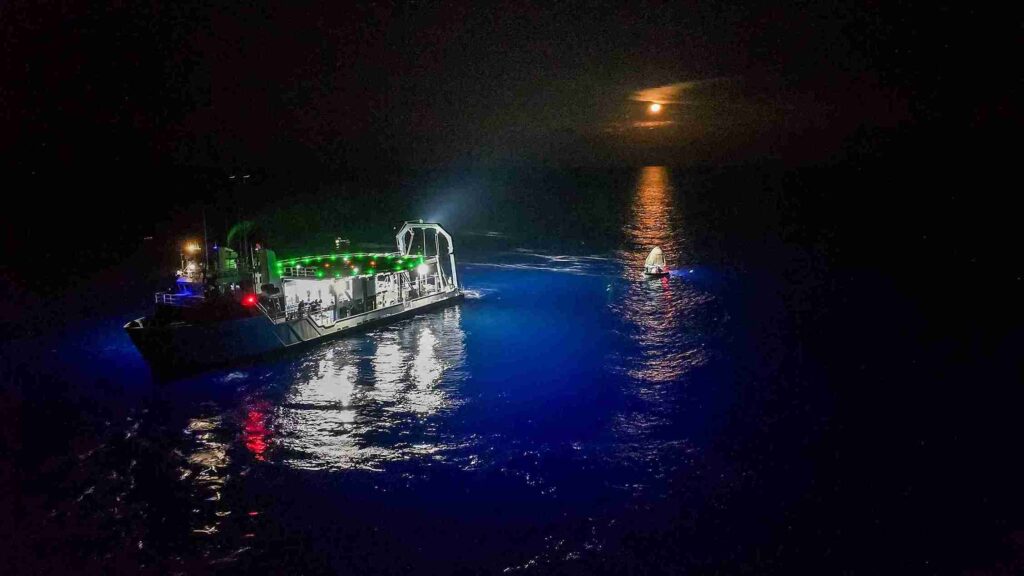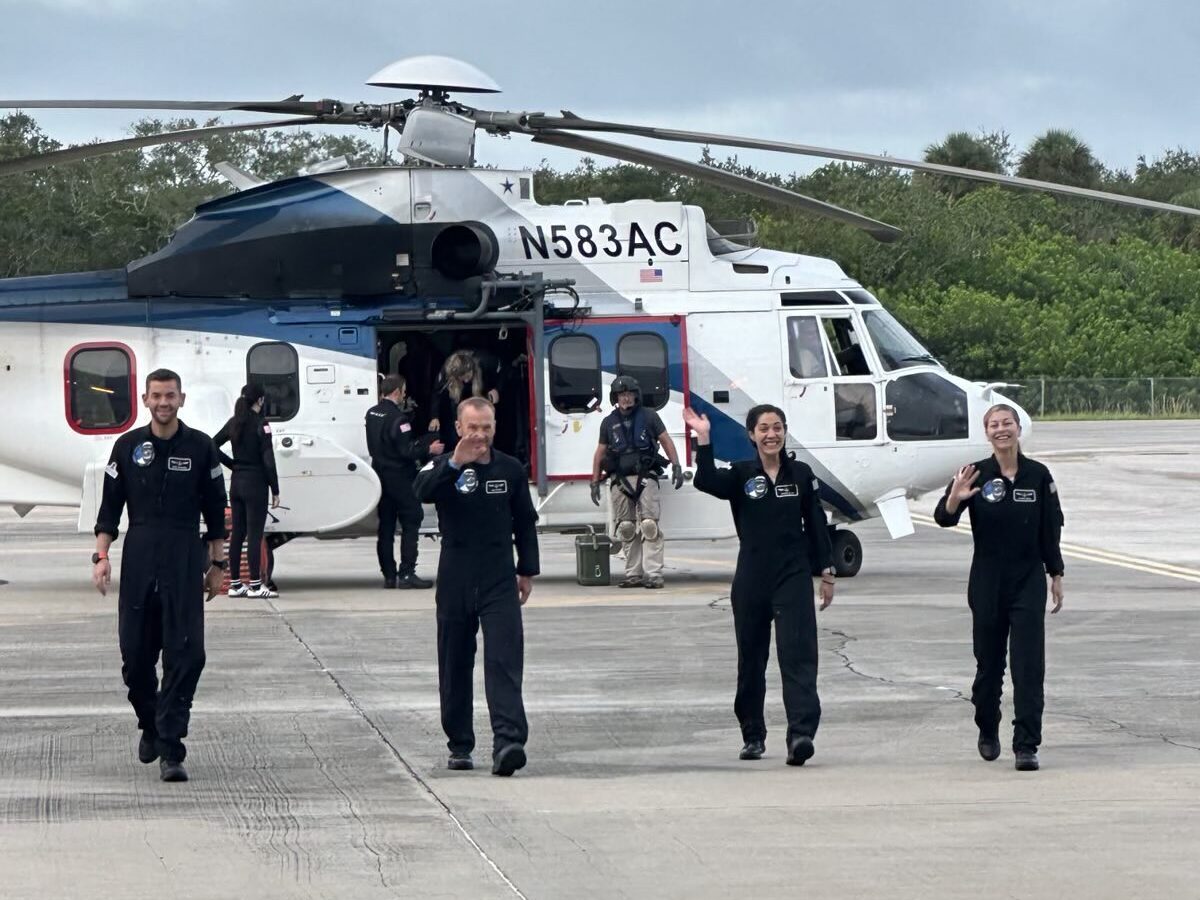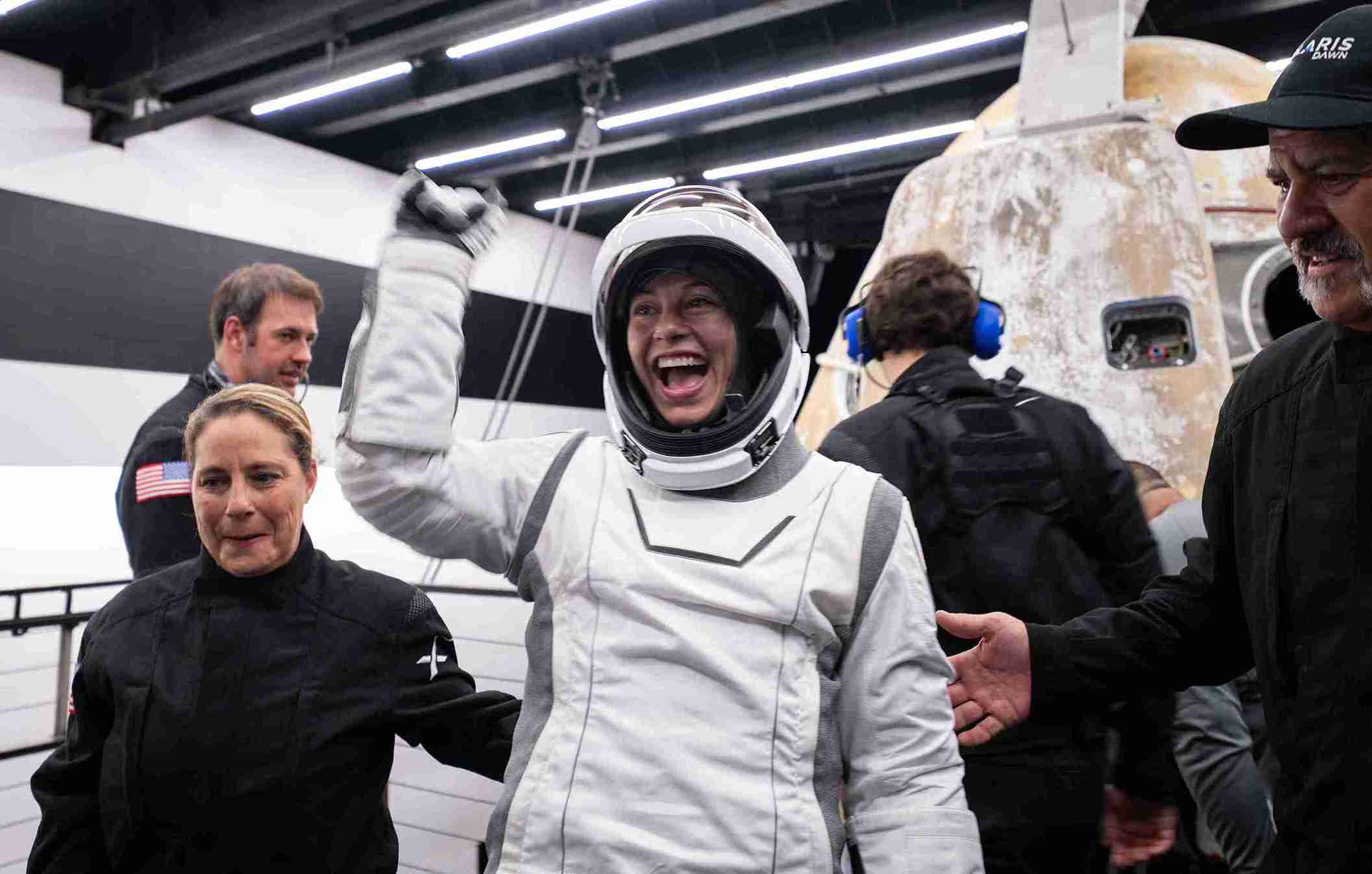The SpaceX Polaris Dawn crew safely returned home after a successful five-day mission, capping off an adventure that included the first-ever commercial spacewalk. Their Crew Dragon capsule landed in the Gulf of Mexico on Sunday at 3:37 a.m. ET, marking the end of a mission that set altitude records and pushed the boundaries of private space exploration.
The capsule carried four astronauts — Jared Isaacman, Scott “Kidd” Poteet, Anna Menon, and Sarah Gillis — who spent five days orbiting Earth and reaching an altitude of 870 miles, the highest a human has traveled in half a century. The crew’s mission also saw the completion of a historic extravehicular activity (EVA), or spacewalk, making Isaacman and Gillis among the few private individuals to conduct such a feat.
The Journey Home: A Safe Return

The return phase of the mission was one of the most dangerous stages. Before splashing down, the Crew Dragon capsule performed a crucial maneuver called the de-orbit burn, slowing the spacecraft down from 17,000 miles per hour to safely re-enter Earth’s atmosphere. As the capsule descended, it reached scorching temperatures of up to 3,500 degrees Fahrenheit (1,900 degrees Celsius), but the crew remained protected by the craft’s heat shield.
After re-entry, the capsule deployed parachutes, further slowing its descent into the Gulf of Mexico, where rescue teams were on standby. Upon hitting the water, the capsule was lifted onto a recovery boat, affectionately named the “Dragon’s nest,” and the crew safely disembarked.
Breaking Records and Setting Milestones
The Polaris Dawn mission wasn’t just about returning safely; it broke multiple records during its five-day journey. The crew reached an orbit of 870 miles (1,400 kilometers), surpassing the previous record set by NASA’s Gemini 11 mission in 1966, which had an apogee of 853 miles (1,373 kilometers). This also made Gillis and Menon the first women to travel so far from Earth.
One of the key moments of the mission was the commercial spacewalk, marking the first time such an event has been completed by a private mission. During the spacewalk, the entire Crew Dragon capsule was depressurized before Isaacman and Gillis exited the vehicle, spending roughly 10 minutes each in space to conduct tests on their EVA suits.
Isaacman, upon viewing Earth from outside the spacecraft, noted, “Back at home we all have a lot of work to do, but from here — looks like a perfect world.” The spacewalk itself was successful, with no significant issues reported, solidifying it as a monumental event in space history.
Scientific Endeavors in Space
Aside from breaking altitude records and conducting a spacewalk, the Polaris Dawn crew spent much of their time conducting 40 scientific experiments. These included studies on the space adaptation syndrome, which affects astronauts in a microgravity environment and causes motion sickness. The research conducted during this mission will help improve the understanding of how humans adapt to long-term space travel, especially as missions to the Moon and Mars become more feasible.
Additionally, Anna Menon took part in a touching moment by reading her co-authored children’s book, “Kisses From Space,” to her family and patients from St. Jude Children’s Hospital. This was part of a larger fundraising effort for the hospital, which mirrored the charitable aspect of Isaacman’s previous Inspiration 4 mission, which raised millions for childhood cancer research.
Meanwhile, Sarah Gillis, an accomplished violinist, played “Rey’s Theme” from the Star Wars film The Force Awakens. Her performance, streamed back to Earth via SpaceX’s Starlink satellite network, served as a demonstration of the system’s potential to provide in-space connectivity. The network is set to play a crucial role in future space missions, ensuring reliable communication even at the farthest points of Earth’s orbit.
Pioneering the Future of Space Travel

Polaris Dawn marked a new era of private space exploration, demonstrating the feasibility of privately funded space missions. SpaceX’s efforts show how space travel is no longer the exclusive domain of government agencies like NASA, but also open to private industry and civilians.
The successful return of the crew also reinforces SpaceX’s Crew Dragon capsule, “Resilience,” which made its third trip to space. First launched during NASA’s Crew-1 mission in 2020, and then again in 2021 for Isaacman’s Inspiration 4 mission, the spacecraft is proving to be a reliable and versatile vehicle for both governmental and private space missions.
With each new mission, SpaceX continues to push the envelope in space exploration. The data gathered from Polaris Dawn, including results from the EVA and scientific research, will undoubtedly pave the way for more complex missions in the near future — including those aiming to return humans to the Moon and send the first crewed missions to Mars.
A New Frontier for Private Space Travel
The Polaris Dawn mission was a monumental success for SpaceX and the broader space exploration community. With the crew safely back on Earth, the mission has set new records, achieved significant scientific progress, and brought humanity one step closer to achieving long-term space exploration goals.
Private space travel is now more than a dream — it’s a reality. The return of the Polaris Dawn crew highlights the immense potential of privately funded missions, as they open the door for more individuals to explore the stars. SpaceX, under the leadership of Elon Musk, continues to demonstrate that the future of space is bright, with opportunities for both professional astronauts and private citizens alike.
As we look ahead, the success of Polaris Dawn will undoubtedly inspire future missions, not just for SpaceX but for the entire space industry. Humanity’s journey into the cosmos has only just begun.

Serving Iraq with pride, BWER supplies high-performance weighbridges designed to improve transport logistics, reduce inaccuracies, and optimize industrial processes across all sectors.